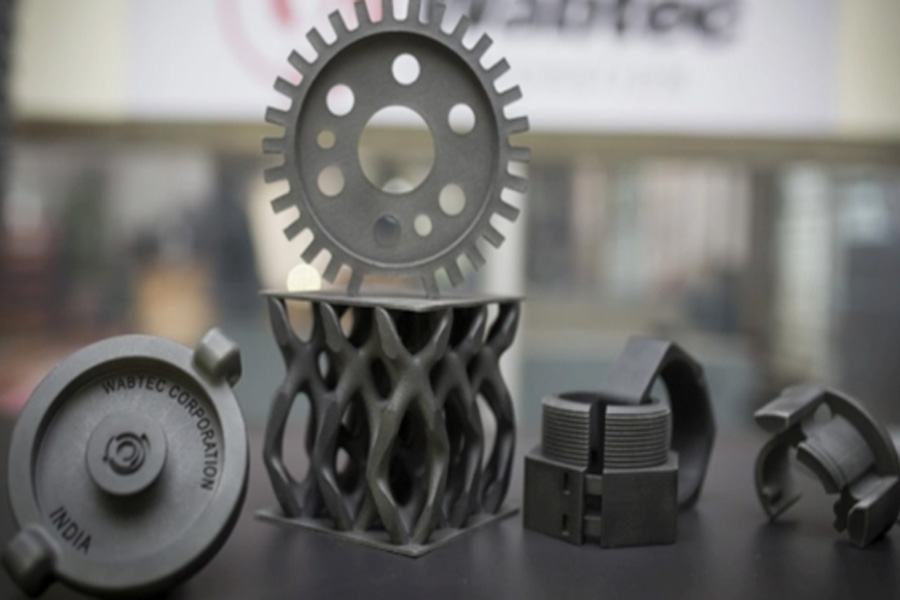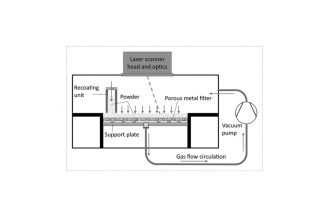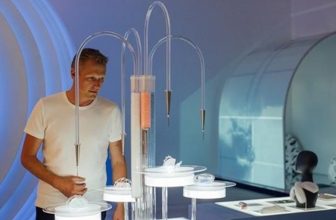
The future of regional infrastructure. For these reasons, it is vital that the railway industry maintains a leading position in the adoption of new and possibly more streamlined manufacturing technologies. Wabtec Corporation is one of the businesses vital to the industry’s adoption, and the company has become an early adopter of 3D printing technology for the manufacture of train end parts.
Jennifer Coyne, head of Wabtec’s global additive manufacturing (AM), said that Wabtec (NYSE: WAB) has a market value of US$13.96 billion and is a manufacturer of locomotives and freight and passenger transportation solutions. The company’s roots are the Westinghouse Brake Company (WABCO) established in 1869. As WABCO has a long history, Wabtec finally merged with WABCO and MotivePower in 1999 to form its own company, and owns the next large company to start operations after the merger with GE Transportation in 2019. As it enters a new era of railway manufacturing, Wabtec has begun to produce locomotives with a power of up to 4,000 horsepower (3 MW) and is exploring all-electric trains.
Coyne, who recently appeared on 3DPOD, pointed out that 3D printing entered people’s vision as a prototype technology in 2015-2016, and metal additive manufacturing became part of the company’s strategy in 2017. “That’s when we formed a team and started discussing and thinking about producing parts. I have been leading the team since 2017. This is a gradual growth process, but it may be faster than most processes because we are investing, Build a team and establish a laboratory to actively serve the internal business and our customers.”
The team has a laboratory in northwestern Pennsylvania, where most of Wabtec’s plastics and prototypes are made. In Grove City, the company focuses on steel and other metals using adhesive jetting and laser powder bed fusion (LPBF). In particular, Wabtec has become an early customer of GE Additive’s H1 adhesive jetting technology. The newest factory in North America will be located in Pittsburgh’s Neighborhood 91 (Neighborhood 91), which will focus on providing LPBF aluminum parts to transit customers. In Bangalore, India, Wabtec also uses HP’s Multi Jet Fusion to 3D print industrial parts for customers.
Coyne may think that Wabtec’s bonus strategy is “quite aggressive” and therefore underestimated it. Compared with most industries, with the exception of the possible aerospace industry, Wabtec’s 3D printing growth only matches GE itself. This makes sense since Coyne came from GE Transportation. Wabtec set the same expectations for additives as GE, and set a goal of 3D printing 25,000 parts by 2025. 2019 is the company’s first year of producing parts on trains. There are 1200 individually printed copies in total, containing 12 different parts. The number of prototype parts is similar.
To this end, Coyne said she wants to gradually increase the number of series parts produced by 3D printing. Last year, it was 12 unique production components. This year, its number has increased to 25. The company will strive to double this number so that by next year, Wabtec’s additives division will become “a mature, well-oiled machine so that we can really expand from there,” as Coyne put it. Although COVID-19 has slowed down the development of almost every industry, Coyne said that there are still some challenges in integrating GE Transportation with Wabtec, because she previously only handled freight and now has to deal with transit issues. In addition, most of the former company’s customers are located in North America, but with the merger of Wabtec, customers are more distributed abroad.
“In the beginning, we had a lot of engine parts, and we found success in them-such as engine heat exchangers-and our technology is evolving with each passing day, for example, our emission standards promote technological changes,” Coyne said. “Now, when we have a more diverse product portfolio and freight and transit, we can move forward quickly, and we have expanded the reasons for additive manufacturing. We have spare parts, which is even more worrying for transportation because They enable these vehicles to operate for more than 40 years, so spare parts eventually become very unique assets. Therefore, some of these parts are difficult to obtain spare parts because the supplier may go bankrupt, etc. Then they also care about lightweight, which is the house freight aspect Things that have never been done. So this is another advantage we have found that additives actually bring a lot of value.”
Coyne was able to elaborate on the different value propositions of 3D printing in providing freight compared to transportation. In freight transportation, weight is actually necessary to keep the wheels on the track so that the hub can pull harder and grab the track. In turn, 3D printing has been improving production efficiency and engine reliability, rather than reducing weight. The company was able to reduce the size of the heat exchangers while making them more efficient and more reliable to remove waste heat from the engine. The benefits of using additive technology in the mass production of heat exchanger and turbocharger parts are that delivery time is reduced by 80% and inventory is reduced by 75% to 80%.
In contrast, transportation is more focused on weight loss. Parts affected by 3D printing include pneumatic valves and parts with a large number of internal passages, which usually require a lot of machining and finishing. When preparing parts for transporting trains, Wabtec was able to reduce the weight by 75%, from 7 kg to two and a half.
Wabtec is also a member of the European Mobility Goes Additive organization, which has been so successful in the formalization of the railway 3D printing industry that it has expanded to create a medical 3D printing network. According to Coyne, the adoption of 3D printing in Europe is very mature compared to the United States, partly because additives are more suitable for product lines than transportation. In particular, European companies seem to want to implement weight reduction through parts consolidation.
One big difference between the United States and Europe is the use of railways for overall transportation, including long-distance transportation. Proponents of the Green New Deal approach to making U.S. infrastructure more sustainable are advocating the use of high-speed rail in the country. When asked about the development of high-speed rail in the United States, Cohen suggested that rail transit will continue to develop in urban areas, but it is not so easy for long-distance country travel. “We have a different view of public transportation because of the higher population density in the United States, Europe and the Asia-Pacific region. It’s just that we face the challenge of further challenges from larger cities. My view is that we will continue to see People movers in cities have more development and technological progress, but using railroads to move people across the country is as unrealistic and economical as moving goods across the country on railroads. In the United States, we just released a sustainability report, It only discusses the relationship between railway efficiency and truck efficiency (for example, moving goods). When you talk about similar things, it does make a lot of sense, but when you talk about moving people, here and the rest of the world always look different Same.”
If you don’t understand economics, and the possible relationships between aviation and rail transport companies, oil giants, and the US government, then it doesn’t seem impossible to develop high-speed rail in the United States. The total land area is also dispersed from each other than the major urban centers in the United States, but the high-speed rail is higher than any other country. Andy Kunz, president of the American High Speed Rail Association, believes that this may be more of a problem of oil interests that hinders the country’s high-speed rail and public transportation.
Even if high-speed rail is not the long-distance transportation solution for the United States, some urban environmental planners still believe that electrification is essential to the transition to renewable energy. In this regard, Wabtec has developed a 100% battery-powered freight locomotive consisting of 20,000 battery cells, and is equipped with a trip optimization system to optimize energy distribution. In a pilot program conducted in the first quarter of 2021, the battery locomotive will operate in a hybrid locomotive along with diesel locomotives that have traveled 350 miles in the San Joaquin valley in California.





